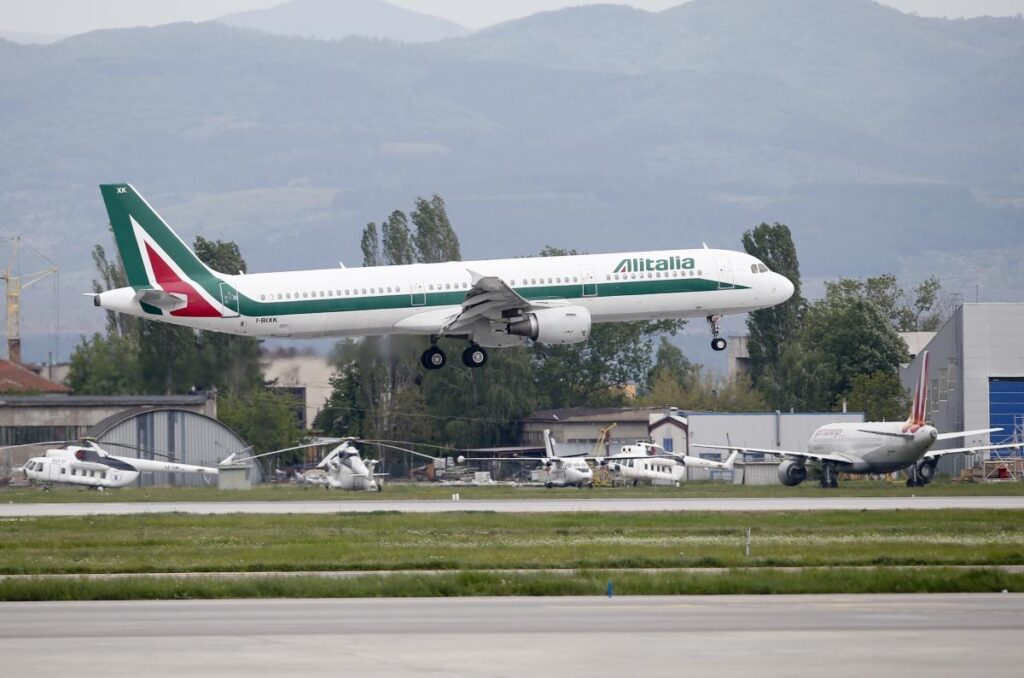Alitalia, Italy’s former national airline, has initiated the process for the collective dismissal of its remaining 2,059 employees, a decision communicated to unions by the airline’s administrators. This development represents a significant chapter in the airline’s tumultuous history, marked by bankruptcy and ongoing difficulties. Alitalia is currently in a state of special administration as it moves toward final liquidation. The latest plan to terminate its remaining workforce will see layoffs include more than 1,100 flight attendants and 82 pilots, all of which are expected to take effect in January. This scenario underscores the ongoing challenges faced by various stakeholders involved, highlighting the precarious state of the airline industry in Italy.
Compounding Alitalia’s troubles is the ongoing merger saga involving its successor, ITA Airways, and German airline Lufthansa. Negotiations for a merger have encountered significant obstacles, primarily due to disputes regarding the pricing for a proposed 41% stake in ITA Airways. Italian media have reported that talks have stalled after the Italian Economy Ministry rejected Lufthansa’s request for a price adjustment, a move that the German carrier argues is necessary due to ITA’s waning performance in the fourth quarter of the year. Lufthansa’s insistence on sticking to the terms of the 2023 contract for its investment reflects its cautious approach amid the complexities of the merger.
Lufthansa’s position about the investment and its conditions is evidently influenced by the perceived value deterioration of ITA Airways, which has been a source of concern for the airline. The ongoing stagnation in the merger talks raises questions about the future of ITA Airways and its viability in an already challenging economic climate. Lufthansa has indicated its commitment to the agreed remedy package by the set deadline, yet the situation remains delicate. Such disputes between major airlines signal the tough landscape of the aviation industry, as airlines grapple not only with operational issues but also with the broader economic implications of their corporate strategies.
Alitalia’s movement toward liquidation represents a pivotal moment for the aviation market in Italy, signifying the end of an era for a company that once stood as an emblem of national pride. The impending layoffs will undoubtedly have serious implications for the employees affected, many of whom have dedicated significant portions of their careers to the airline. Economic repercussions may also extend beyond the individual workers to the families and communities reliant on these jobs. Such transitions within the airline industry often ignite discussions on job security and the need for robust support systems to assist displaced workers.
As Alitalia’s legacy begins to fade, ITA Airways emerges as the new player focused on revitalizing air travel within Italy and beyond. However, the airline’s performance and its intended merger with Lufthansa are pivotal factors determining its future trajectory. Stakeholders, including employees, management, and investors, are keenly watching how these developments will unfold in the coming months. Success in striking the merger deal could provide ITA with the necessary resources and strategic direction to enhance its competitive edge in a challenging market, while failure may thwart its progress and lead to further restructuring.
Overall, the unfolding situation surrounding Alitalia and ITA Airways encapsulates the broader struggles faced in the aviation sector, emphasizing how deeply interconnected corporate strategies and economic realities are. The collective dismissal of Alitalia’s remaining workforce poignantly illustrates the human cost of corporate failures, while the stalled merger negotiations with Lufthansa showcase the complexities involved in operational consolidation within the industry. As stakeholders navigate these unpredictable waters, the emphasis on sustainable practices, employee welfare, and strategic growth will likely be more crucial than ever for the future of air travel in Italy.

